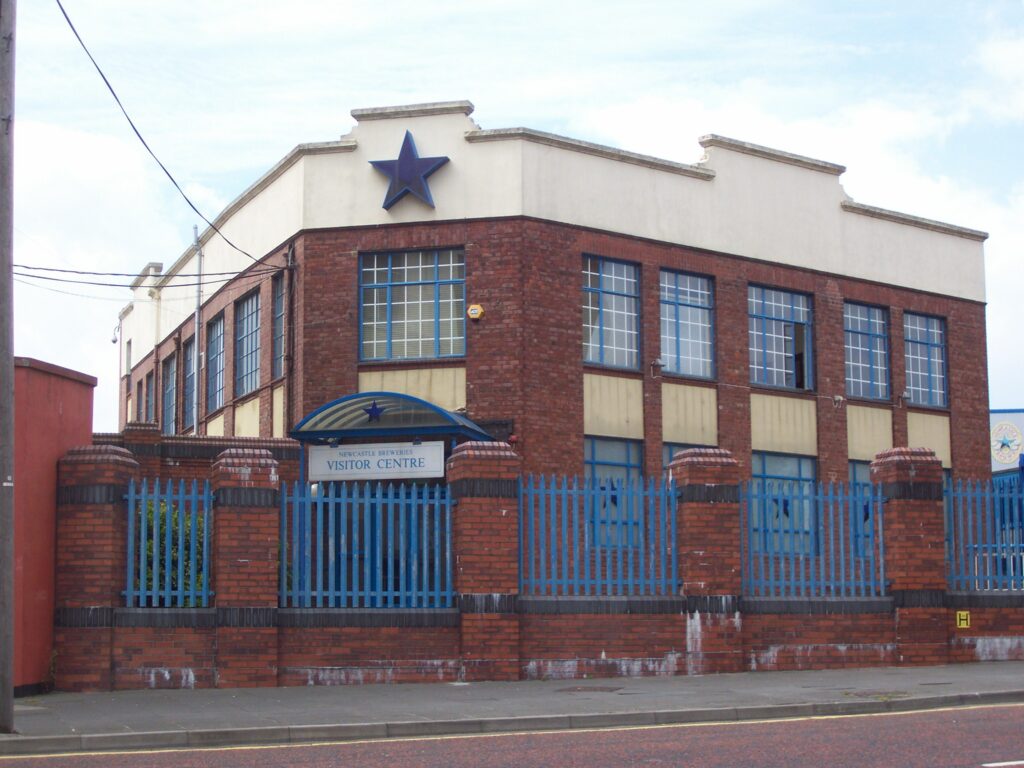In Part 1 of his blog, Emeritus Professor Christopher Ritson hinted at the major social changes influencing the beer drinking market in the North East. Here, he delves deeper into these and their impact on drinking habits.

A few years before the events outlined in Part 1, there were billboards around Tyneside advertising Newcastle Exhibition. These showed a group of “lads” running towards a Blue Star pub. The caption was “The last one to the pub’s a lager drinker.” This epitomized the failure of the Brewery to appreciate the social revolution undermining the traditional market for their products. Lager (they believed) was a women’s drink (“Lager and Lime”), which indeed it had been, in the early post-war period. Whether such a sexist marketing campaign would have been chosen today is debatable, but the assumptions underlying the advert were then already out of date.
The 1960s social revolution
I recall the words of a participant in one of the discussion groups: “I remember the day my dad took me to the club and bought me my first pint. And I hated it – but you gradually learn to get a taste for it”. That is how most boys were introduced to pubs and clubs and thus became incorporated into the culture and tradition of beer consumption in the North-East. But not anymore. By the late 1960s, young people we socializing in their own groups, and an important characteristic in their patterns of beer consumption was to choose products which were different from those consumed by their parents, preferably at different locations. (Another example of this was how coffee became the drink of choice among young people in England in the 1960’s, the main motivation being that it was “not tea”.) We advised Newcastle Breweries that there was nothing about the taste or image of lager which attracted young people, other than that it was “their product”, and not what their fathers drank.
The Brewery Response
Newcastle Breweries launched a new product, called “Newcastle Bright”, which was (I quote the Marketing Manager) “entirely based on your research”. It was targeted at young drinkers, as a lager type beer they could identify with. Now, it would be nice at this point if I could report that it was a roaring success, but it flopped. CAMRA (the Campaign for Real Ale) got their teeth into it. The momentum behind CAMRA’s drive against “tasteless sterilized” beer in stainless steel kegs, and for a return to cask conditioned hand-pumped “real “ale, was now well underway. As a beer product, Newcastle Bright was just about as far removed from Real Ale as you could get.
In our defense, our research was designed to explain why the market for beer was changing, not to provide a blueprint for a new product. In practice, it is extremely difficult for a company to launch a new product which will capture demand from an autonomous trend. The rise of lager consumption (and its unfortunate spin-off – the “lager lout”) were spontaneous social developments, not something created by the Breweries.
The Bigg Market
We did two further studies for Newcastle Breweries. One, based entirely on a series of group discussions, looked specifically at the emerging drinking behaviour of young people. A particularly enlightening group consisted of a gang of girls who met every Thursday for a tour of the Bigg Market, which by then had become the centre for nightlife in Newcastle. Where did they meet up, and why; what did they wear and why; what did they drink and why; the specific route taken (always the same). Some aspects of this social drinking behaviour were difficult to resolve. For example, why were they willing to queue for entry to places early in the evening, which were empty later on; and queue for entry to places later in the evening, which were empty earlier! We were not aware of any major action taken by the Brewery in response to this second study unlike, however, the case with the third.
Plastic Plants
The third study was an intensive investigation of all the pubs in a specific locality (Kenton), about half of which were managed by Newcastle Breweries. Because of the location, the area’s residents had a choice of several alternative pubs. So what influenced their choice? Was it the beer, the brewery, the decor, the clientele, the atmosphere? At the time, there was a major refurbishment programme underway to smarten up the Newcastle pubs. But there was no attempt to give individual pubs a specific identity, as would be the case today. It was similar carpets and furniture and pictures, irrespective of the pub; and…plastic plants. What we discovered was that people hated the plastic plants. They associated their presence with a lack of a caring management, a “couldn’t be bothered to make an effort” attitude. So, our research programme did have one significant impact. Virtually overnight, plastic plants disappeared from the entire Newcastle Breweries Estate.
The philosophy underlying successful marketing is, of course, for a company to identify and meet its customers’ needs and wants. I still find it astonishing that Newcastle Breweries knew so little about the market for their beer.
